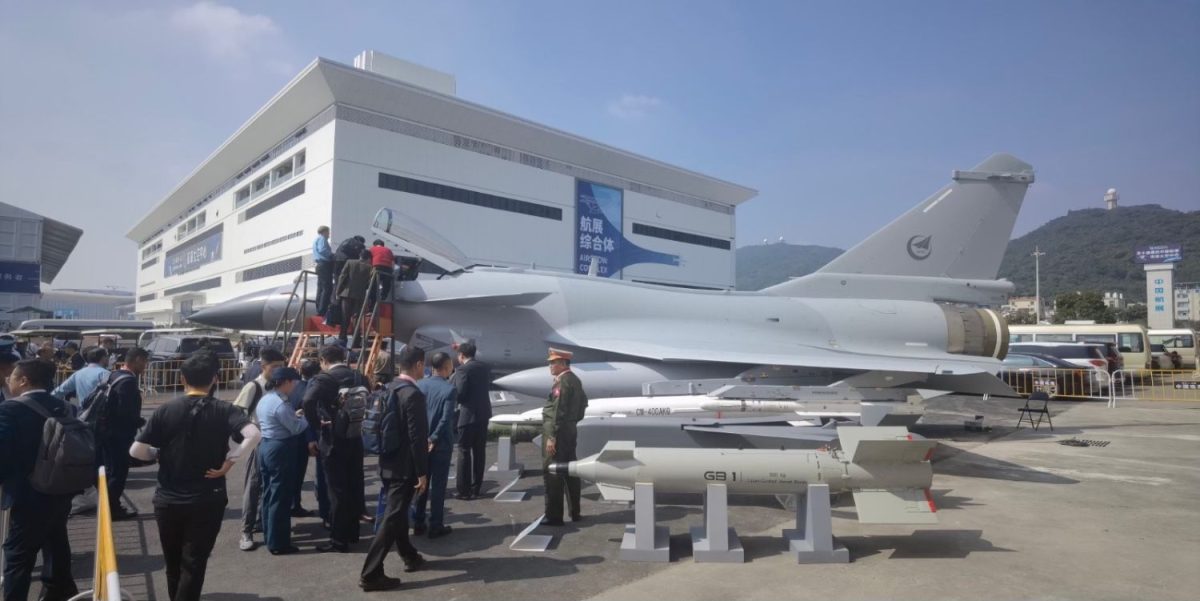Despite China unveiling its latest stealth aircraft, the J-35A, at the ongoing Zhuhai Air Show, the J-10C ‘Vigorous Dragon’ fighter jet has evoked significant interest from prospective buyers.
The Azerbaijani Air Force Commander, Lieutenant General Namig Islamzade, was photographed on November 15 examining the export variant of the J-10C fighter jet—known as the J-10CE—at the Zhuhai Air Show 2024.
According to a statement released by Azerbaijan’s Defense Ministry, the Commander also met with his Chinese counterpart, General Chang Dingqiu.
“The meeting discussed the current state and future prospects of military and military-technical cooperation between the Air Forces of Azerbaijan and China. Lieutenant General Namig Islamzade expressed his gratitude to General Chang Dingqiu for the invitation to attend the exhibition,” read the statement.
Photos of the Azerbaijani Air Force Commander examining the J-10CE were published on social media, generating speculation about Baku’s interest in buying the cutting-edge aircraft.

Notably, the Azerbaijani Air Force Commander’s visit came within days of the Iranian Air Force Commander Brigadier General Hamid Vahedi’s inspection of the J-10CE on November 12.
Interestingly, Azerbaijan has just acquired and inducted the JF-17 Block III, developed jointly by Pakistan and China. Earlier, Pakistan also inducted J-10C into its air force after using JF-17 for many years. There is speculation that Azerbaijan could follow the same path now.
After Iran and Azerbaijan’s inspection of the J-10CE, it is safe to say that even though the recently unveiled J-35A, China’s second stealth aircraft, has been making headlines with its display and aerial demonstrations, the J-10CE continues to shine at the Zhuhai Air Show.

In fact, according to recent reports, Egypt has purportedly opted to purchase the J-10C rather than upgrade its fleet of existing F-16 Fighting Falcons.
China has been aggressively pursuing the Middle East market for its aircraft exports, promoting the J-10C as a better substitute for the US F-16 Fighting Falcons, the European Eurofighter Typhoon, and the French Rafale. Moreover, Chinese aircraft are cost-competitive, with each unit costing around US$40–50 million.
Some previous reports indicated that Saudi Arabia, which currently operates the F-15 and Eurofighter Typhoon, has also shown interest in the Chinese J-10C aircraft.
Earlier, there were reports that Bangladesh was interested in the Chinese J-10C aircraft, as evidenced by a Bangladesh Air Force delegation visiting China in 2018 to inspect the J-10.
In 2019, China Military Online carried an article expecting orders for one or two dozen J-10 aircraft each from Laos and Bangladesh. Bangladesh Air Force operates a dozen Chinese J-7 fighters, Russian MiG-29s, and Su-30 Flankers. However, these reports later dissipated.
In the coming years, many countries, including Iran and Egypt, could emerge as prospective buyers of the J-10C. So far, the only operator of the J-10C aircraft outside of China is Pakistan, its closest ally.
China’s J-10C: A Formidable Aircraft
The J-10C is often compared to improved versions of the US F-16 Fighting Falcon. Its fly-by-wire flight control system, similar to that of the F-16, uses a computer to maintain its aerodynamically unstable, incredibly agile airframe.
The J-10C is equipped with a WS-10B engine, integrated AESA radar, PL-15 air-to-air missiles, and an imaging infrared seeker (IIR) PL-10.
Its cutting-edge features include computerized glass cockpit instruments, electronic warfare, accurate air-to-ground strikes, fighting beyond visual range, and in-flight refueling. In January this year, seven J-10C Fighter jets were refueled by a single YY-20 refueling aircraft in a stunning display of PLAAF’s might.
The aircraft is capable of all-weather operations. Its primary role is air-to-air combat, but it can also perform strike missions.
Chinese specialists have praised the aircraft as a game-changing fighter jet, frequently pointing to its enhanced sensors and armaments for visual and beyond-visual-range engagements and its lower radar signature as a massive advantage against its international competitors.
The Chinese multirole fighter also incorporates a forward-facing target designator pod that uses laser and infrared technology. This pod was designed to enable the use of lasers and satellite navigation-guided weapons.
- Contact the author at sakshi.tiwari9555 (at) gmail.com
- Follow EurAsian Times on Google News




